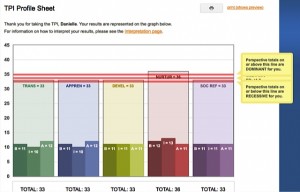During my short time here at the Centre for Teaching, Learning and Technology (CTLT), I hope to apply the skill set that I have acquired through my English Literature and Education degree in a way that benefits everyone I work with. Also, I hope to start creating a professional online identity which can be resourceful to all participants in education. Finally, I hope to contribute to Amy Perreault’s work with Aboriginal Initiatives in a way which promotes a more unified and mutually respectful atmosphere for both Aboriginal and non-Aboriginal students.
I have always had a sort of quiet uneasiness about the growing reliance on technology. Just think of narratives like The Machine Stops, Brave New World, and Brazil–it’s enough chill my blood by a few degrees because these stories are somewhat prophetic. It would be foolish to claim that technology were the main culprit in the dystopian societies presented in the aforementioned stories, but it’s definitely a highly suspected force. Though I still have my reservations about the pervasiveness of the internet and hyper-online-lives, I would be a hypocritical liar if I said that I haven’t benefited from technology. Having access to the internet and the digitization of educational texts has made my undergrad career extremely convenient, which leads me to the question, is convenience always a good thing? Whether it is or not, it’s a necessary thing in this increasingly fast paced world.
Working at CTLT has broadened and deepened my views on technology. I had not previously considered the benefit of creating a professional online identity, nor considered that though the internet may be full of trolls and ignoramuses, there are also online communities of people with perspicacious insight into various topics. From an teacher’s perspective, I not only acknowledge the potential of using the internet as an educational tool, but I believe that I share the responsibility of teaching kids how to use the internet wisely.
As Olivia (my working partner) and I have three supervisors, Amy Perreault, Cindy Underhill and Lucas Wright, I was having a bit of trouble figuring out how all their work related to one another. However, through discussions, workshops, and class visits, Olivia and I are able to thread information into the work that each of our supervisors are doing. So far, it seems that identity and technology (among other things) inform the work that we’re doing here, but I will explain that more explicitly as my term here continues.

